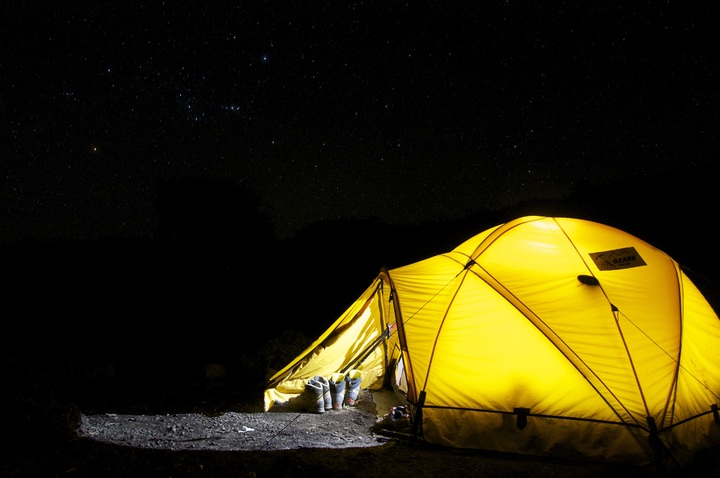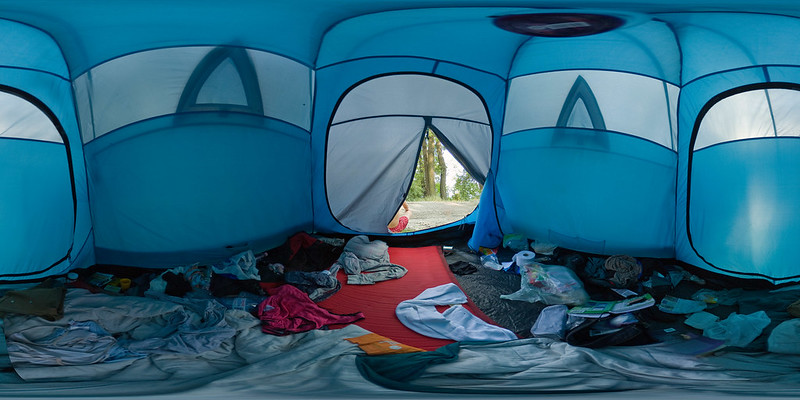Backpacking is one of the most exciting ways to explore the world and meet new people. When you are backpacking, you enjoy an incredible amount of freedom because all of your belongings are literally strapped to your back. You can change your travel plans at the drop of a hat and explore interesting locations that you saw while on your way to your next destination.
If you take a lightweight backpacking tent with you on your journey, the freedom you can enjoy is even greater. Having a tent available means you can camp in the most spectacular locations that each area has to offer. It also means that you will save a ton of money on accommodation costs — allowing you to make your trip even longer!
We’ve field tested some of the best budget backpacking tents, to make sure you’re getting quality item without breaking the bank. After all, you want a backpacking tent that will hold up for many adventures to come.
This guide will take a closer look at the best budget backpacking tents. We’ll give you an idea of the kinds of features that are useful in backpacking tents and explain how to choose the best tent possible.
The 5 best budget backpacking tents
Let’s cut to the chase. We’ve done the research, you’re here for our findings.
There’s a lot that goes into choosing the right backpacking tent. To save you the hassle of comparing dozens of tents, here are 5 of the best budget backpacking tents that have the perfect combination of features, ease of use, and durability.
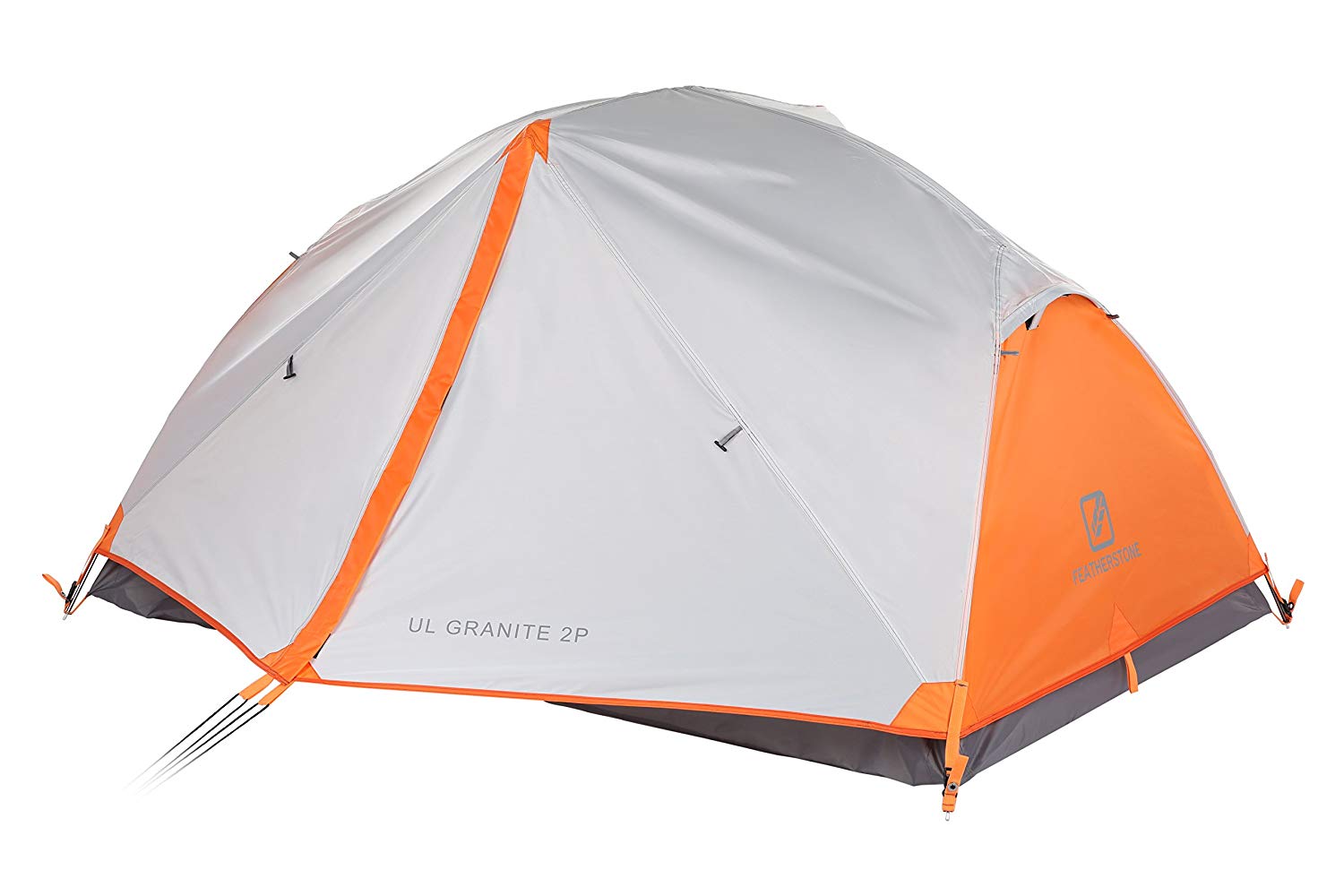 |
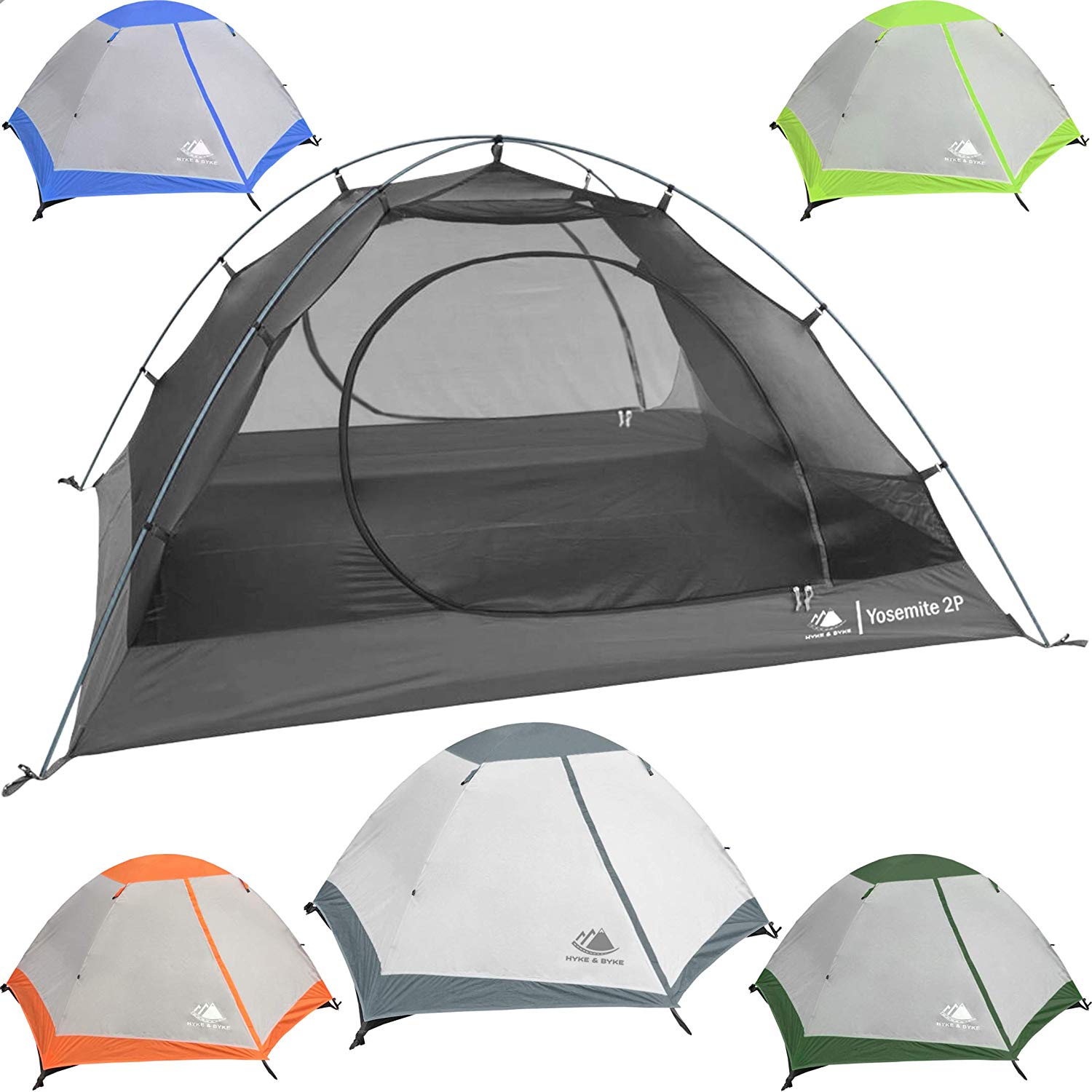 |
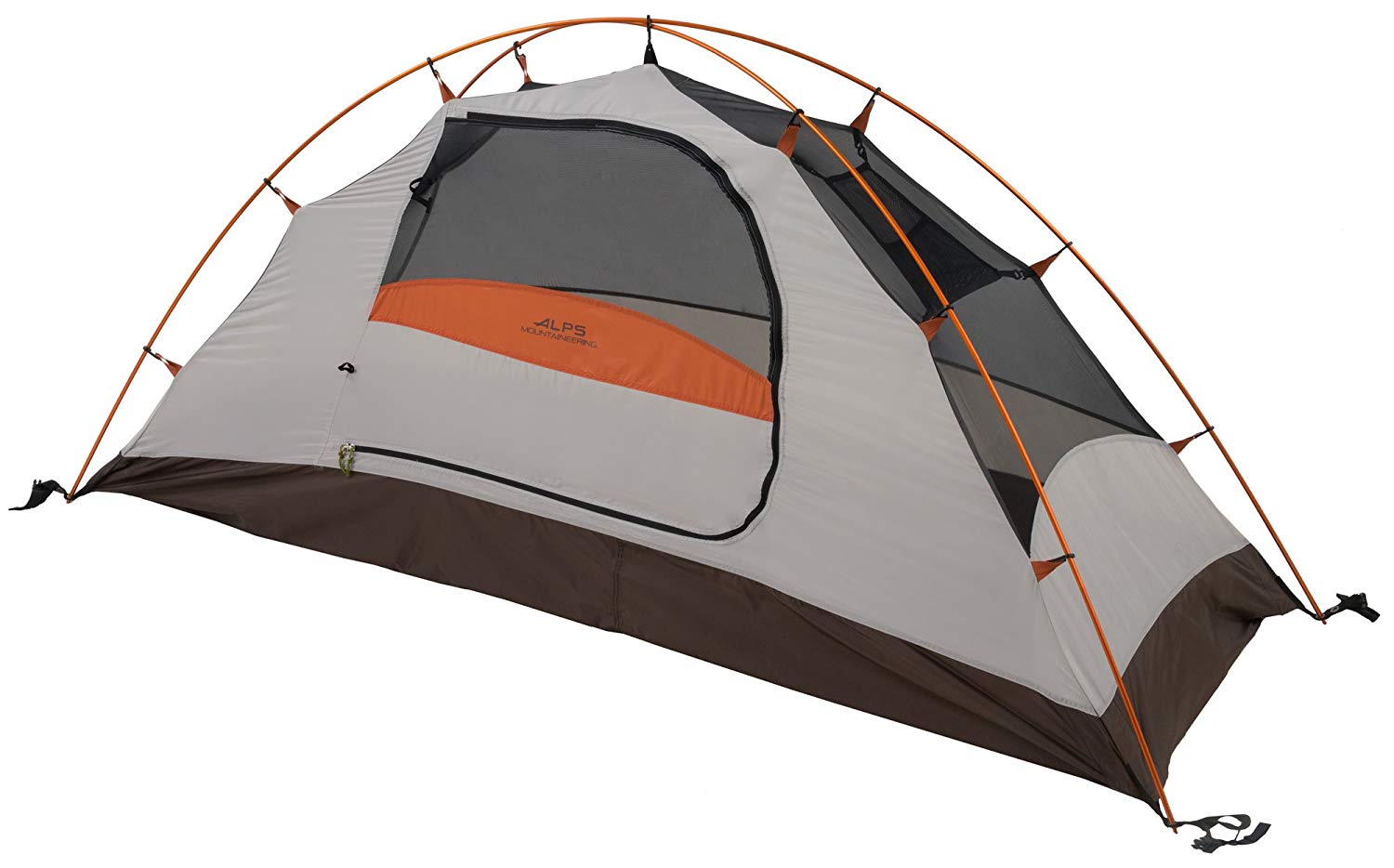 |
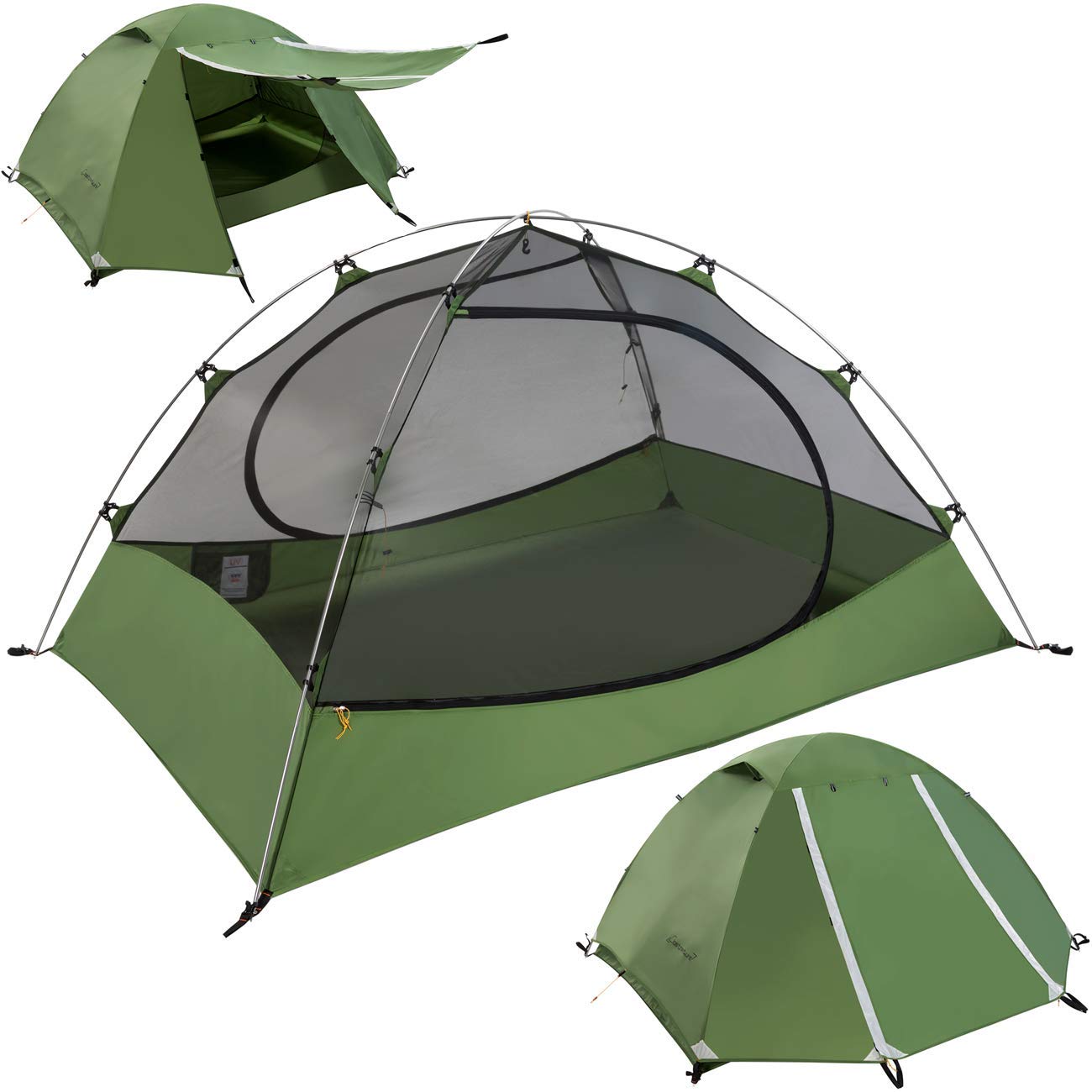 |
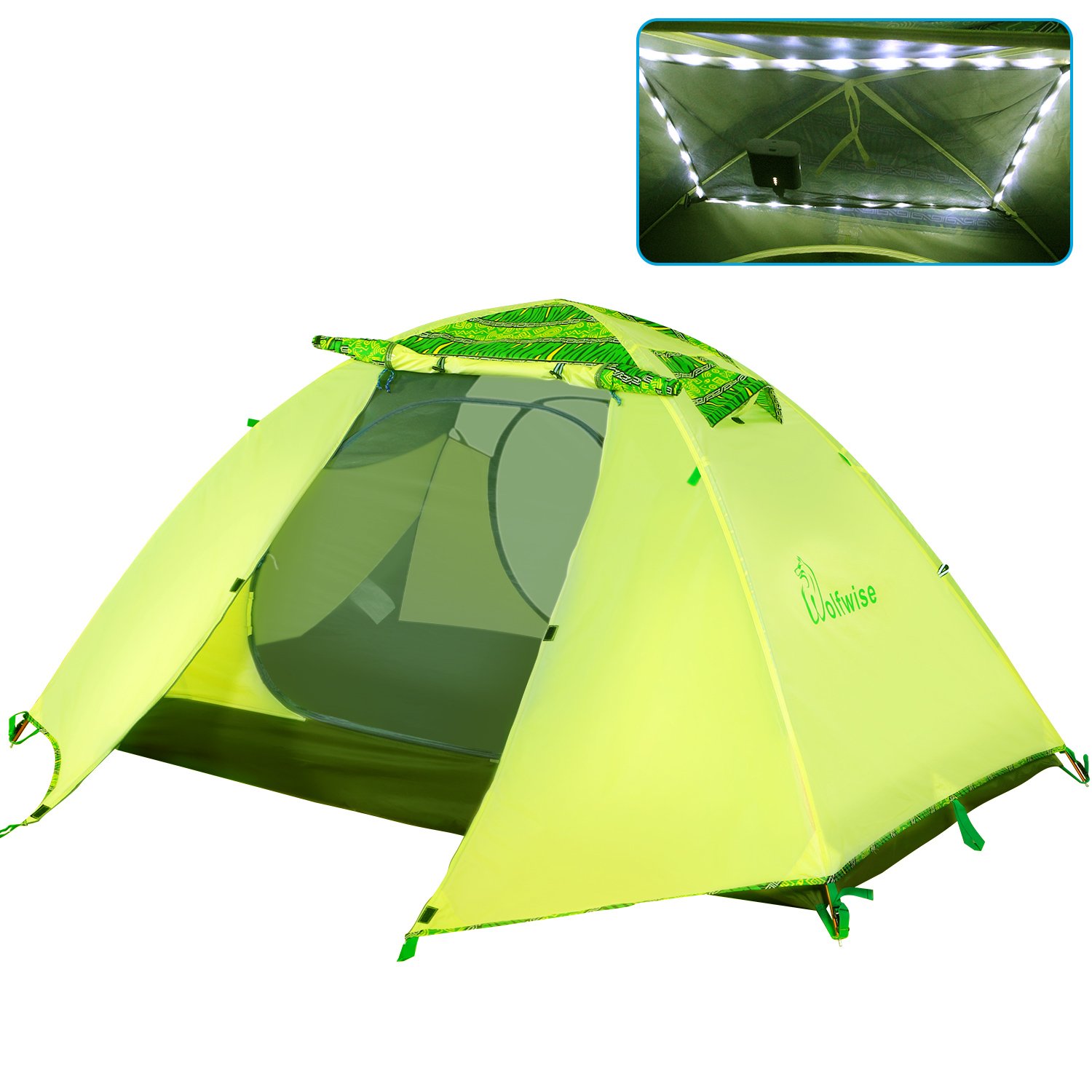 |
| Featherstone Outdoor UL Granite Backpacking 2-Person Tent | Hyke & Byke Yosemite 1 and 2 Person Backpacking Tents | ALPS Mountaineering Lynx 1-Person Tent | Clostnature Lightweight 2-Person Backpacking Tent | WolfWise 2 Person 3-4 Season Lightweight Backpacking Tent |
| Rating: 4.5/5 | Rating: 4.4/5 | Rating: 4.6/5 | Rating: 4.6/5 | Rating: 4.8/5 |
| Floor Size: 84” x 51” x 43” (W x L x H) | Floor Size: 88” x 110” x 45” (W x L x H) | Floor Size: 32” x 90” x 36” (W x L x H) | Floor Size: 87” x 59” x 46” (W x L x H) | Floor Size: 82.7” x 55.1” x 43.3” (W x L x H) |
| Weight: 4lb | Weight: 2.5 lb for 1-person, 3.2lb for 2-person | Weight: 4lb 4 oz | Weight: 5lb 8oz | Weight: 4lb |
| Materials: 75-denier Ripstop Polyester Rainfly and 210-denier Ripstop Polyester Floor (3000mm PU) | Materials: 63-denier Ripstop Polyester Rainfly (2000mm PU) and Floor (5000mm PU) | Materials: Water resistant Polyester (2000mm PU) | Materials: Ripstop Polyester Rainfly (5000mm PU) and Bathtub Floor (5000mm PU) | Materials: 190 Thread Ripstop Polyester Rainfly (2000mm PU) and 150 Denier Floor (3000mm PU) |
| Design: Freestanding | Design: Freestanding | Design: Freestanding | Design: Freestanding | Design: Freestanding |
| Cost: $$ | Cost: $$ | Cost: $$ | Cost: $ | Cost: $ |
 |
| Featherstone Outdoor UL Granite Backpacking 2-Person Tent |
| Rating: 4.5/5 |
| Floor Size: 84” x 51” x 43” (W x L x H) |
| Weight: 4lb |
| Materials: 75-denier Ripstop Polyester Rainfly and 210-denier Ripstop Polyester Floor (3000mm PU) |
| Design: Freestanding |
| Cost: $$ |
 |
| Hyke & Byke Yosemite 1 and 2 Person Backpacking Tents |
| Rating: 4.4/5 |
| Floor Size: 88” x 110” x 45” (W x L x H) |
| Weight: 2.5 lb for 1-person, 3.2lb for 2-person |
| Materials: 63-denier Ripstop Polyester Rainfly (2000mm PU) and Floor (5000mm PU) |
| Design: Freestanding |
| Cost: $$ |
 |
| ALPS Mountaineering Lynx 1-Person Tent |
| Rating: 4.6/5 |
| Floor Size: 32” x 90” x 36” (W x L x H) |
| Weight: 4lb 4 oz |
| Materials: Water resistant Polyester (2000mm PU) |
| Design: Freestanding |
| Cost: $$ |
 |
| Clostnature Lightweight 2-Person Backpacking Tent |
| Rating: 4.6/5 |
| Floor Size: 87” x 59” x 46” (W x L x H) |
| Weight: 5lb 8oz |
| Materials: Ripstop Polyester Rainfly (5000mm PU) and Bathtub Floor (5000mm PU) |
| Design: Freestanding |
| Cost: $ |
 |
| WolfWise 2 Person 3-4 Season Lightweight Backpacking Tent |
| Rating: 4.8/5 |
| Floor Size: 82.7” x 55.1” x 43.3” (W x L x H) |
| Weight: 4lb |
| Materials: 190 Thread Ripstop Polyester Rainfly (2000mm PU) and 150 Denier Floor (3000mm PU) |
| Design: Freestanding |
| Cost: $ |
Featherstone Outdoor UL Granite Backpacking 2-Person Tent
This affordable backpacking tent from Featherstone strikes the perfect balance between weight and comfort. It is a highly durable, breathable, and lightweight tent ideal for backpacking.
The Featherstone Outdoor UL is a spacious lightweight two-person tent measuring with a floor space of 84 x 51 inches. It includes two doors and two vestibules for storing backpacks. This product is a 3-season tent made from 75-denier Ripstop Polyester with a 3000mm polyurethane hydrostatic-rated coating. The floor is made from thick 210-denier Nylon with the same hydrostatic coating.
One of the best features of this tent is how weatherproof it is. The seam-taped construction forms an impenetrable barrier against moisture — critical when backpacking in the rainy season. The bathtub floor design also prevents water from the ground from leaking into the tent through the walls.
The Featherstone Outdoor UL is fairly easy to set up, with a single aluminum pole design. It is a freestanding tent, so you can quickly pick it up and move it to another location when necessary. The generous lifetime warranty, price, and features make this tent an excellent choice.
Pros:
- Excellent weatherproofing
- Spacious for two people
- Lightweight tent
- Packs into a small space
Cons:
- Could have stronger zippers
Hyke & Byke Yosemite 1 and 2 Person Backpacking Tents
Hyke & Byke have built a reputation for making excellent backpacking tents that are both affordable and highly durable. Their Yosemite tents are no exception. This tent is available as both a one-person and two-person tent, with the lightweight one-person tent measuring 88” x 75”, and the two-person tent measuring 88” by 110”. There is plenty of headroom in these tents with the one-person and two-person having 42” and 45” respectively.
The Yosemite is very easy to set up. It uses 2 poles with a clip-pole attachment that can be assembled in a couple of minutes. The poles and stakes are both very lightweight, which is handy for backpackers who are already carrying a fully loaded pack. The entire tent weighs just 3.2 lbs for the two-person model and 2.5 lbs for the ultralight one-person tent model. This tent also collapses down to a small size (17.75” by 6.3”).
The materials used to make the Yosemite are all very high quality. The rainfly is 63 denier polyester with a 190 thread count and 2000mm polyurethane coating. The inner tent body is made from the same material but also has a B3 Net yarn. The floor is identical but with a 5000mm polyurethane coating for additional waterproofing.
Pros:
- One-person tent is ultralight at 2.5 pounds
- Two-person tent model is particularly spacious
- Rip-resistant material
Cons:
- Lower denier compared to some other budget backpacking tents
ALPS Mountaineering Lynx One-Person Tent
This freestanding one-person tent from ALPS Mountaineering is highly durable, lightweight, and simple to set up. It has been designed to be an ultraportable tent that packs into a small form factor. It is perhaps the easiest tent to assemble from the 5 being reviewed in this guide, which makes it useful for when you quickly need some shelter. Simply thread the two aluminium poles through the tent and stake it in 4 places.
The proportions of this tent are perfectly suited to the solo backpacker or camper, coming in at 32” x 90” x 36”. The weight is also quite reasonable at 4 lbs 4 oz or 3 lbs 8 oz if you only take the essentials. This tent is made from high-quality materials including water and UV resistant polyester, and aluminium poles. A great choice for solo backpackers.
Pros:
- High-quality zippers
- Lightweight tent
- Perfect for the solo backpacker
- Fantastic value for money
- Very long, so great for taller backpackers
Cons:
- The stakes could be higher quality
- May not stand up to extremely wet conditions
Clostnature Lightweight 2-Person Backpacking Tent
This 2 person backpacking tent from TNH has been designed with convenience and comfort in mind. The tent measures 7’3” x 4’11” x 3’10” with a maximum height of approximately 45”. When it is packed up, it measures 16.5” x 5.9” x 5.9”, which is quite compact compared to many other budget backpacking tents. It is by far the best budget backpacking tent under $100, in fact, it’s the most affordable one on our list.
This is another freestanding tent design that uses two aluminium poles and a small number of pegs. The curved design of this tent makes it a great choice if you expect to be camping in windy conditions. It also has interior mesh walls, which provide plenty of ventilation if the weather becomes hot. The two D-shaped doors open up the spacious interior which features 2 vestibules offering plenty of room for storing your backpacks.
This is one of the most waterproof backpacking tents reviewed, thanks to its 201 thread polyester rainfly (5000mm PU), groundsheet, and bathtub design. The water-resistant coating is quite thick and performs well in harsh weather.
Pros:
- At under $100, the tent is remarkably affordable for these specifications
- Very spacious
- A high level of water resistance
- Interior accommodates very tall people
Cons:
- Slightly heavier than some of the other tents at 5lb 8oz
WolfWise 2 Person 3-4 Season Lightweight Backpacking Tent
This WolfWise two-person 3-4 Season tent is made from high-quality anti-tear polyester with 190 thread count, double-stitched seams, PU coating, and stitch taping. The floor is made from 150 denier anti-tear Oxford cloth and has a waterproof index of 3000mm.
The tent expands to a size of 82.7” x 55.1” x 43.3” from its folded size of 20.9” x 6.7” x 6.7”. It comes with some fantastic features including a USB LED roof light, wind rope, and shock-corded pole. The oversized doors make entry and exit simple.
This tent combines high-quality materials with ease-of-use and some excellent features. The LED roof lights are very useful and the professional construction tent makes it capable of operating in all weather conditions. The affordability of this tent is a major selling point, especially given the quality of its construction.
Pros:
- Handy LED roof lights
- Easy setup
- Large size
Cons:
- At over 5 pounds it is heavier than some other tents
How to look after your backpacking tent
Here are a few quick tips for caring for your new backpacking tent!
Storing your backpacking tent dry
If you can, avoid rolling the tent up while it is wet. This will cause mildew to form on the tent, which will ruin its appearance and may cause a health hazard. Leaving moisture on a rolled-up tent can also damage the polyurethane coating that is on the rain fly. A budget backpacking tent with a polyurethane coating will dry very quickly, so simply hang your tent out of the rain for a few minutes or wave it around to remove moisture.
Wash your tent when it needs it
Backpacking can be a dirty business! You may often be camping in locations that are muddy or dusty. It is important to remove any debris from your tent as soon as possible because mud, salt, and dust can damage the water-resistant coating on a tent.
Fortunately, cleaning your tent is simple. Just spray a water hose on the tent until the debris is off. Never use chemical cleaners on your tent and don’t place it in a washing machine as they may also damage the coating on the tent.
Re-sealing your tent
The water-resistant coating that is applied to your tent’s surfaces is not permanent. It will gradually wear out over time as it is exposed to harsh weather, dirt, and other contaminants. Fortunately, you can purchase spray-on water-resistant coatings for tents. Once you have owned your budget backpacking tent for a year or two (depending on how often you use it), test how water resistant it is by running a hose over it. If water seems to penetrate into the tent, apply a layer of water-resistant coating.
Thanks for reading Our Gear Review of The Best Budget Backpacking Tent. For more outdoor gear reviews check out our other blog posts.

